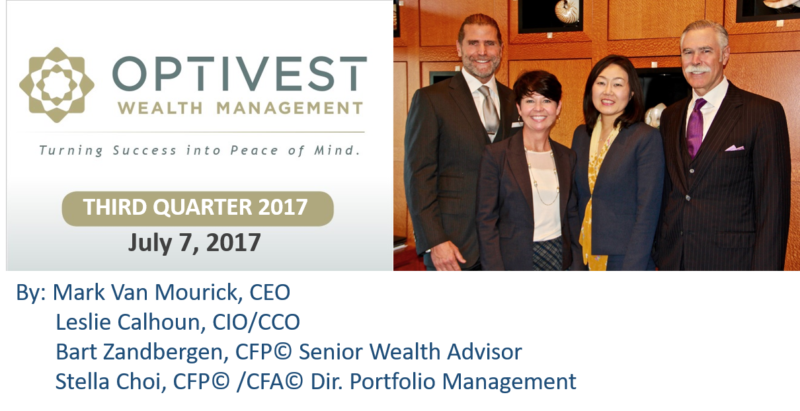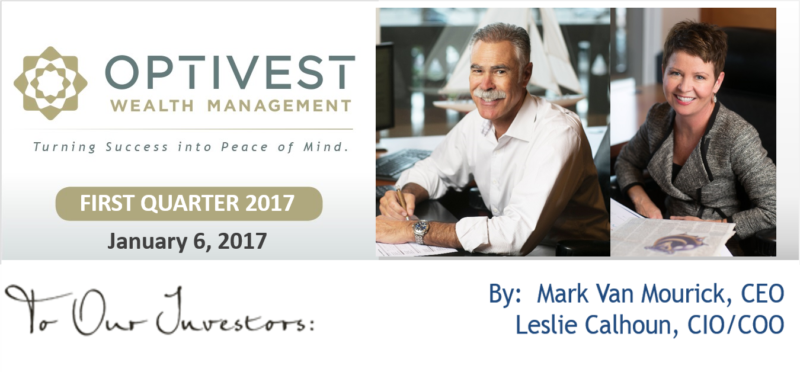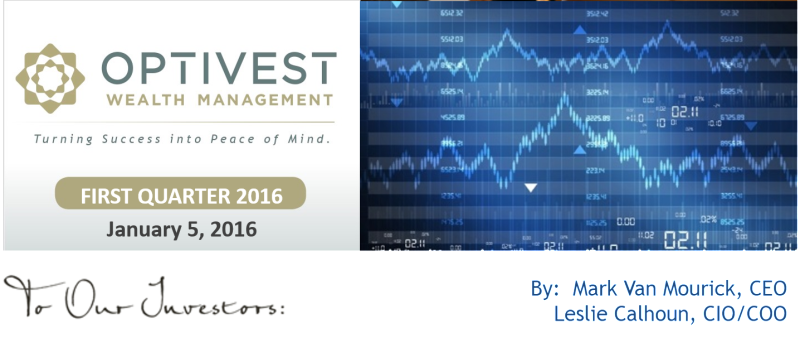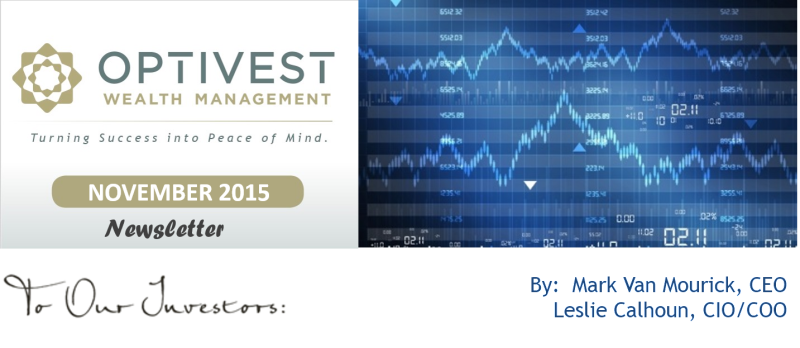
U.S. & World Economy by Mark:
Economy: The Trump “sugar rush” is over, yet we have landed on an economic sweet spot for inflation (approximately 2%). This combined with modest worldwide GDP growth, near full employment, and cautious hope on tax reform has lead global financial markets (both stocks and bonds) to end the first 6 months of 2017 with near YTD highs. Surprisingly, we’re also in a climate of lower volatility than one would have expected – the lowest in 50+ years according to Wall Street Journal – given the drama highlighted by the “news” and the media. However, first half of the year bets on higher inflation and domestic company growth have gone unrewarded as commodities (led by oil), managed futures, and small cap stocks have all underperformed this year so far.
By year-end we suspect that this current economic balancing act will have selected a specific direction: either there will be a belief that pro U.S. business policies will start (and work) and inflation/higher interest rates will resume; or hopes will peter out and our flattening yield curve (combined with high valuations) will lead to the next downturn in the economy and financial markets. We are not willing to make that “all or nothing” market call and thus we remain well balanced and positioned to accept either outcome. Continue reading









 Financial Markets Review by Mark:
Financial Markets Review by Mark: